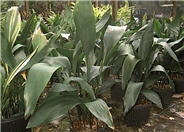
Common name:Aspdistra, Cast-Iron Plant
Botanical name:Aspidistra elatior
As an evergreen perennial, it is often used as a house plant. Its dark green leaf blades arise from the soil and are 1'-2' long. Each blade is found on a 6-8" long leave stalk. This plant grows in dark, shaded areas and is very water efficient.
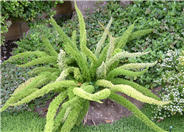
Common name:Myer's Asparagus
Botanical name:Asparagus densiflorus 'Myers'
An evergreen groundcover, the 'Myers' also makes an excellent hanging basket plant when larger in size. Its formal looking fronds have an even, spiral arrangement of leaflets. It is damaged by severe frosts, and looks best with at least occasional watering. -Monterey Bay Nursery
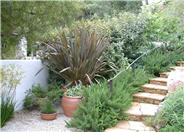
Common name:Red New Zealand Flax
Botanical name:Phormium 'Rubrum'
New Zealand Flax is an excellent accent plant for the garden. Evergreen leaves are long, narrow, and grow upright. Clusters of flowers grow on spikes above the foliage in late spring and summer. 'Rubrum' is a large, bold plant with stiff, vertical, strap-like leaves that arise from its base and are dark purplish red in color. It should be grown in full sun.
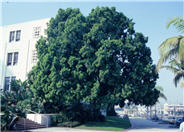
Common name:African Fern Pine
Botanical name:Afrocarpus elongatus
Soft, narrow, pointed leaves on graceful arching branches characterize this plant. The foliage is gray green, and the plant can be used as an individual specimen, screen, or even a small tree.
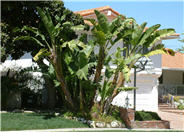
Common name:Giant Bird Of Paradise
Botanical name:Strelitzia nicolai
This clumping evergreen perennial can reach 25' tall fairly quickly, forming a false trunk from the base of the leaves. The leaves are shaped like bananas, reaching 10' long with the widest part reaching 5' . It does best with fertilizer once a month and rich soil. It does not like wet feet so water only when dry. It can be planted in full sun but will do better if it receives afternoon shade. The flowers can reach a size of 10"-12", but plants need to be a few years old before they will flower.
| Designer: Nina and Mike Mays | Guard Statues |
Photographer: GardenSoft |
Soils and Compost:
Physical weed control, including mulching, or hand removal protects the watershed from harmful chemicals.
Water Saving Tip:
In general, lawns only need to be watered once every three days.
Check your irrigation controller and reduce watering times if necessary.
Integrated Pest Management:
Remove irrigation water and fertilizer from areas where you don't want weeds to grow.
